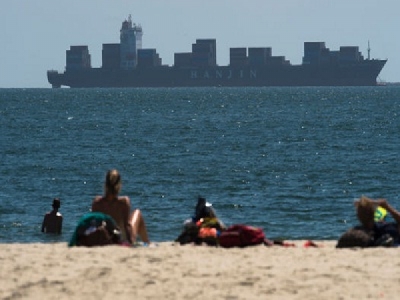
Posted on September 25, 2016
OVER the past few weeks, many American retailers have worried that Christmas, their most profitable selling season, will be ruined. In late August, Hanjin Shipping, South Korea’s biggest container line and the world’s seventh-largest, filed for receivership. Some 66 of its ships, loaded with $14.5 billion of goods, including quantities of electronics heading for America, were left stranded at sea. Ports around the world did not want to let Hanjin’s vessels dock because the bankrupt line had no money to pay unloading fees. Neither did they want creditors impounding Hanjin’s vessels in their facilities, leaving valuable moorings occupied for months. Although the stricken firm’s parent, Hanjin Group, promised $90m to allow some of the ships to finally make it to port, this is short of the $270m needed, and as a result most are still stuck at sea.
Companies that need to move their goods around the world by sea are worried that other container lines will soon follow Hanjin into bankruptcy, throwing their supply chains into chaos. On revenues of around $170 billion, the container-shipping business is set to lose as much as $10 billion this year, according to Drewry, a consultancy. Of the biggest 12 container lines that have published results for the past quarter, 11 have revealed huge losses. Maersk, a Danish firm that is the world’s largest container carrier, is also in the red, and announced on September 22nd that is will break itself up to compete. Several weaker outfits are teetering on the edge of bankruptcy. Another South Korean carrier, Hyundai Merchant Marine, was bailed out earlier this year, with creditors, including the Korean taxpayer, taking a big hit. And in Japan three firms, Mitsui OSK Lines, NYK Line and Kawasaki Kisen Kaisha, look especially vulnerable. Activist investors are now pressing for them to merge to avoid the same fate as Hanjin.
Hanjin’s bankruptcy—and the abysmal performance of so many lines—is the result of overcapacity in the shipping industry. Since the financial crisis, too many vessels have been built and not enough scrapped, while the growth in global trade has decelerated. An earnings index compiled by Clarksons, a research firm, covering the main types of vessel—bulk carriers, container ships, tankers and gas transporters—reached a 25-year low in mid-August. The average for the first half of 2016 was 30% down, year on year, and 80% below the peak of December 2007. Rates for container lines have been hit particularly hard over the past two years, as export volumes from China and South Korea contracted. Sending a container from Shanghai to Europe costs half what it did in 2014, according to figures from the Chinese city’s shipping exchange. In 2015, for the first time since containers were invented in the 1950s, global GDP grew faster than worldwide box traffic (apart from the 2009 recession).
There is an easy way out of the crisis in shipping. If enough lines scrapped their ships, the amount of spare capacity in the industry would fall, and freight rates would rise to a point where firms in it would break even. But they are loth to do this. For stronger players such as Maersk, building more big ships means that freight rates fall faster, pushing weaker competitors out of business. And many smaller lines cannot afford to scrap their ships. Low steel prices mean that they would need to declare big losses on their balance sheets if they scrapped them. Although a restructuring plan mooted for Hanjin would result in an 85% reduction in its fleet, almost all the ships it would get rid of will continue operations under the flags of other carriers. Until some serious scrapping takes place, do not be surprised if more shipping lines declare bankruptcy.
Source: The Economist





